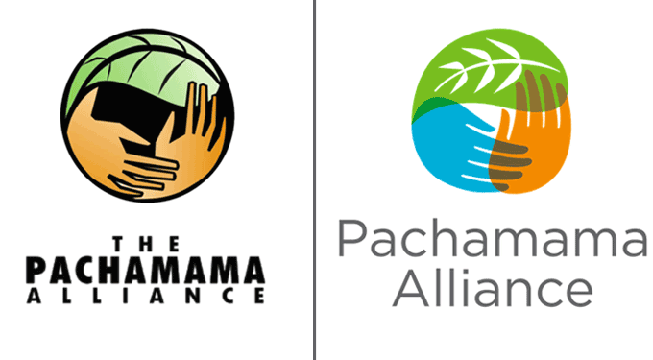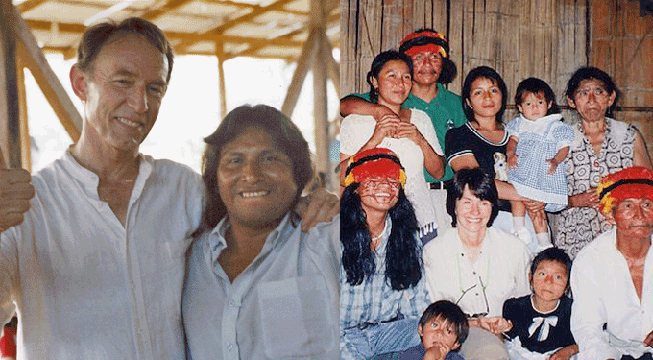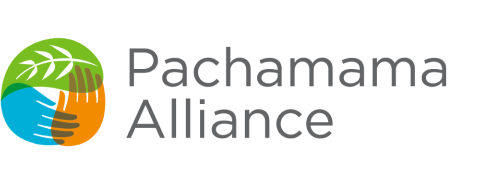
Same beautiful name and same all-life encompassing mission but now with a new, refreshed logo and website as we sharpen our focus on co-creating a new era where a mutually beneficial human/Earth relationship worldview is the norm!
Recently, we sat down with Pachamama Alliance co-founders, Bill and Lynne Twist, to get the inside scoop on the meaning behind the name and what it means to them.
What is the meaning of “Pachamama” and what is the meaning of an Alliance? Has this meaning changed for you over the last 19 years since the organization was formed?
Lynne: The word Pachamama is a Quechua word that literally translates as Mother Earth, but to indigenous people of the Andean region it has a much deeper, larger meaning—the Earth, sky, universe, and all time. The word now rings into the depths of my soul. I understand it more deeply, that it really is the source of life. It also represents the broad community of human beings on this planet who are awake and aware, and that our relationship to the natural world—with the Earth as our mother—is the key relationship to deepen as we move into the next era of life. I love that word and it’s a word that is fun to say—it has a beauty in it. And, it is only one part of our name—the other part is the word Alliance. We are an alliance for the Earth and an alliance for the relationship between humankind and the Earth herself. We are an alliance for humankind and for indigenous people who are the keepers and the custodians of the natural world in many parts of this planet.
We are also an alliance between our work and the organizations and corporations we work with. We have a huge vision and there is humility in knowing that we cannot do this all by ourselves. It has to be an alliance with millions of people and ultimately with governments and institutions. Without allies, there is no chance of fulfilling a mission this large. Who and where the allies are is a constant evolution of the Pachamama Alliance, and ultimately, it’s everybody.
It is a beautiful word. There’s equity, equality, and respect in it. Nobody is in charge or dominating. It is about partnership and working together. For donors, it is about working together in partnership with an organization that represents their values, to have their dreams and visions for the world fulfilled. Our alliances are all over the place and that is what makes us strong, credible, and ultimately effective.
Bill: We knew that it was an important word and that it was pointing to a sacred relationship with nature, but we didn’t know the depth when we chose it—recognizing that nature wasn’t an innate entity out there, but that it was a living ecosystem. Now, as Lynne said, the meaning is even deeper. The word Pachamama refers not just to Mother Earth over there, but a whole unfolding system of unity and complexity that we’re all a part of. I think that Lynne said it right, the understanding is deeper, more powerful, and nuanced than it was in the beginning. It was clearly the right name.
Pachamama Alliance is not just an alliance with indigenous people, people in the modern world, or with different organizations. It is declaring a reverent relationship with Pachamama—the animating spirit of life.

Can you take yourself back to when you first heard that name? Is there a different story behind when you first heard that name vs. the origin story that you might want to tell now?
Lynne: I remember a meeting we had at our house in the early stages of Pachamama Alliance before it was named that. We were just a loose affiliation of people who had had an encounter with the Achuar and we had made some financial commitments. We called ourselves: Friends of the Achuar Nation, F.A.N. We knew that name wasn’t it, so we had a naming meeting. We came up with many wonderful names but we had somehow already begun to call it the Pachamama Alliance. We weren’t sure that name was right because the word Pachamama wasn’t familiar to people—we were just getting familiar with it ourselves. By the end of the meeting, we chose Pachamama Alliance. For me it had a beauty, rhythm, and magic to it. It was a bit mysterious and gave you the opportunity to explain it or to say something to people to give them a real sense as to what it is. And what it means is the Earth, the sky, the universe and all time. It’s an alliance with indigenous peoples of the Amazon and conscious committed people in the modern world for the sustainability of life itself.
Bill: It was Pachamama Alliance co-founder, John Perkins who first suggested the name after we had been in Ecuador. It resonated with us and was clear—it’s a big name with a big meaning in the Amazon region. Pachamama is a word from the Quechua people of the Andes, primarily. But the idea of Pachamama has such universal respect and reverence throughout the entire Andean region.
What does the original logo symbolize?
Bill: We were trying to show a connected relationship. Originally the hands were different colors. There was a lighter hand and a darker hand: indigenous, the modern world, and the forest. It was a circular, closed relationship. We’re all in it together; our success is all tied up together.
Why change the logo and look of the website now?
Lynne: We are refreshing the logo to be more in keeping with the times we are in now. It’s the same logo, but it is refreshed. It’s brighter, more upbeat, more current and powerful in this time.
Bill: We’re looking at a new era with new creativity. We are working differently now. We have a deeper understanding and recognize the role of technology. We understand how important the tools and techniques of the modern world are for being successful in our mission. We didn’t want to change the meaning of the logo, but to have the logo reflect modern possibilities.
We welcome you to learn, connect, engage, travel, and cherish life by participating in our programs and invite you to explore our new site now.
